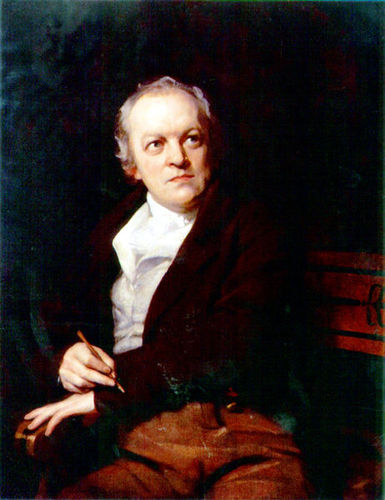He was an English poet, engraver and mystic. Although not being known in his time, nowadays Blake’s work is recognized and he is a good example of a “complete artist” because of the relationship that poetry and engravings have in his work.
Blake was born in the 28th of Broad Street in Golden Square, in London, in the bosom of a new middle-class family. His father worked knitting and it is thought that they belonged to a radical religious sect known as Dissenters.
Since he was a child, Blake had mystic visions that inspired him in writing poetry. Blake’s verses have been considered one of the most original and prophetic works in English language and his work means the rejection of the ideas of the illustrated movement in favour of Romanticism.
He was autodidact and since he was a child he wanted to become a painter. He stayed in an engrave school and when he was fourteen he began to work as the apprentice of the engraver James Basire. At the age of twenty-one he was studying in the Royal Academy where he rebelled against the esthetical doctrines of his director, Joshua Reynolds, who defended the neoclassicism typical from artists such as Rubens. Nevertheless, later he became friends with academics such as John Flaxman and Henry Fuseli, whose works had a big influence in Blake.
By 1784, he opened a printing work and despite the fact that it failed some years later, he continued earning a living as an engraver and an illustrator. His wife helped him in the printing of the illustrated poems, which till today have made him to be known all over the world.
The graphic works of Blake challenged the artistic conventions of the XVIII century. He defended imagination against reason. Michelangelo’s influence is present in the powerful foreshortened figures and in the exaggerated musculature some figures have. It can be seen in a very well-known work: The Ancient of the Days, which is the frontispiece of his poem Europe: A prophecy (1794).
He devoted a big part of his painting to religious subjects: illustrations for John Milton’s work, who was his favourite poet, illustrations for John Bunyan’s The Pilgrim’s Progress, illustrations for the Bible as well as twenty-one illustrations Blake realized for Book of Job. Between his pagan illustrations we can find the ones he did for Thomas Gray’s poems and the 537 watercolours for Edward Young’s Night Thoughts (Only forty three of them were published).


